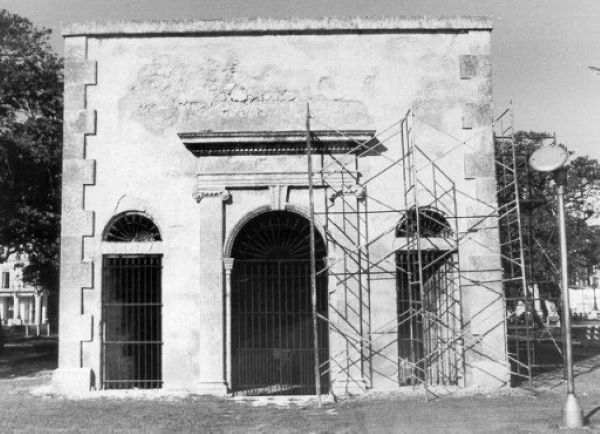A new museum design to commemorate the 150th anniversary of the execution of the eight medical students will be inaugurated on 27 November at the Monument to the Royal Prison of Havana, located very close to the Bay Tunnel and the Malecón in the Cuban capital.
Specialists from the Archaeology Museum of the City Historian's Office are currently working on a project aimed at recovering, revitalizing, and exhibiting the historical events that took place in the penitentiary in the 19th century, the golden age of the Caribbean island.
The installation will be based on infographic panels on the history of the prison, whose vestiges remain as silent witnesses in the Parque de los Mártires; and the figures who were imprisoned in the building, the mark of José Martí, Fermín Valdés Domínguez, and the 8 medical students. They will also allude to the Garrotte and the main prisoners executed in the old esplanade of La Punta, attached to the enclosure.
The building will have 9 panels: The Royal Prison of Havana; Monument to the Royal Prison of Havana and the Chapel of Cubanness; Executed in the Royal Prison of Havana; Prisoner 113; The 8 medical students; Fermín Valdés Domínguez; the Garrotte, Dungeons and the Demolition of the Royal Prison of Havana.
The Garrotte, located inside the prison and on the esplanade of La Punta, was the instrument of execution used in Cuba from 14 May 1841 until the American intervention in 1898.
A symbol for a century of colonial oppression in Cuba, the Royal Prison of Havana was one of the most dismal public places for the people of Havana in the 19th century. Built by Captain-General Don Miguel Tacón y Rosique for 480,640 pesos, its architect was the military engineer Miguel Pastor.
The neoclassical style facility was completely built in 1839, and despite its serious problems, the building remained standing for over a hundred years and was almost completely demolished in 1941.
The government then proposed to use the former penitentiary and another land along the waterfront for public parks.
However, the Cuban Society for Historical and International Studies, headed by Dr. Emilio Roig de Leuchsenring, fought for the area to be named Parque de los Mártires de la Libertad, and for some of the dungeons and the chapel to be preserved as a memorial.


Deje un comentario